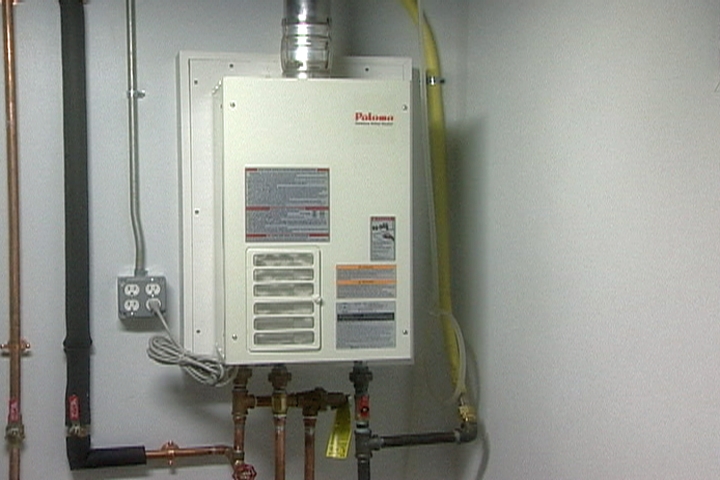Right here on the next paragraphs you might get a bunch of professional material involving How to Maintain a Hot Water Heater in a Few Simple Steps.

Warm water is vital for everyday comfort, whether it's for a refreshing shower or cleaning recipes. To guarantee your hot water system runs efficiently and lasts much longer, regular maintenance is vital. This write-up supplies useful suggestions and insights on just how to preserve your home's warm water system to prevent disruptions and costly fixings.
Intro
Maintaining your home's hot water system could seem difficult, however with a few straightforward actions, you can ensure it runs efficiently for many years to come. This overview covers everything from recognizing your hot water system to do it yourself maintenance tips and recognizing when to contact specialist assistance.
Importance of Preserving Your Hot Water System
Normal maintenance not just prolongs the lifespan of your warm water system but additionally ensures it runs efficiently. Disregarding maintenance can bring about reduced efficiency, higher power bills, and also premature failing of the system.
Indications Your Warm Water System Requirements Upkeep
Knowing when your warm water system needs interest can stop significant issues. Keep an eye out for signs such as irregular water temperature, unusual sounds from the heating unit, or rustic water.
Purging the Water Heater
Purging your water heater gets rid of sediment accumulation, boosting efficiency and prolonging its life.
Checking and Changing Anode Rods
Anode rods stop corrosion inside the storage tank. Evaluating and replacing them when worn out is vital.
Complicated Concerns Requiring Expert Help
Examples include significant leakages, electrical issues, or if your hot water heater is constantly underperforming.
Routine Specialist Upkeep Advantages
Expert maintenance can include complete examinations, tune-ups, and ensuring compliance with safety requirements.
Examining and Changing Temperature Setups
Readjusting the temperature level setups makes certain optimum efficiency and safety and security.
DIY Tips for Upkeep
You can execute numerous maintenance jobs on your own to keep your hot water system in top problem.
Looking for Leakages
Routinely examine pipelines and links for leakages, as these can bring about water damage and greater expenses.
Comprehending Your Hot Water System
Before diving into maintenance jobs, it's practical to understand the standard parts of your warm water system. Normally, this consists of the water heater itself, pipes, anode rods, and temperature level controls.
Month-to-month Upkeep Tasks
Regular monthly checks can aid capture minor issues before they intensify.
Evaluating Pressure Alleviation Valves
Examining the stress safety valve guarantees it works appropriately and stops excessive stress accumulation.
Protecting Pipes
Shielding warm water pipes reduces warm loss and can save power.
When to Call a Professional
While DIY upkeep is useful, some issues require specialist know-how.
Conclusion
Normal maintenance of your home's hot water system is crucial for effectiveness, longevity, and price savings. By adhering to these ideas and knowing when to seek specialist help, you can make certain a trustworthy supply of hot water without unforeseen disturbances.
How to Maintain an Instant Hot Water Heater
Before tinkering with your hot water heater, make sure that it’s not powered on. You also have to turn off the main circuit breaker and shut off the main gas line to prevent accidents. Also turn off the water valves connected to your unit to prevent water from flowing into and out of the appliance. 2. When you’re done, you have to detach the purge valves’ caps. These look like the letter “T” and are situated on either side of the water valves. Doing so will release any pressure that has accumulated inside the valves while at the same time avoid hot water from shooting out and burning your skin. 3. When the purge valves’ caps are removed, you have to connect your hosing lines to the valves. Your unit should have come with three hoses but if it didn’t, you can purchase these things from any hardware or home repair shops. You can also get them from retail stores that sell water heating systems. Read the user’s manual and follow it to complete this task properly. When the hosing lines are connected, open the purge port’s valves. 4. You should never use harsh chemical cleaners or solutions when cleaning your unit. Make use of white vinegar instead. It should be undiluted and you’ll probably use about 2 gallons. 5. Now flush your water heater. This task should probably take about 40 minutes. We can’t give you specific directions for this because the procedure is carried out depending on the type, model and brand of your heater. With that being said, refer to the user’s manual. 6. When you’re done draining the unit, you have to turn off the purge port valves again. Remove the hosing lines that you earlier installed on each of the water valves. Put the valve caps (purge port) back in their respective places and be very careful so as not to damage the rubber discs that are found inside these caps. 7. Now that everything’s back in place, check your user’s manual again to find out how to reactivate your water heating system. 8. Once it is working, turn one of your hot water faucets on just to let air pass through the heater’s water supply pipes. Leave the tap on until water flows smoothly out of it. https://www.orrplumbing.com/blog/2014/september/how-to-maintain-an-instant-hot-water-heater/
:max_bytes(150000):strip_icc()/tankless-hot-water-system-in-the-basement-of-a-green-technology-home-529577258-77afda16fd494c6899a78000888c3204.jpg)
I discovered that blog posting on What Kind of Maintenance Do Water Heaters Need? when doing a lookup on the internet. Do you know about somebody who is interested in the subject? Be sure share it. I am grateful for your time. Don't forget to check our website back soon.
Information